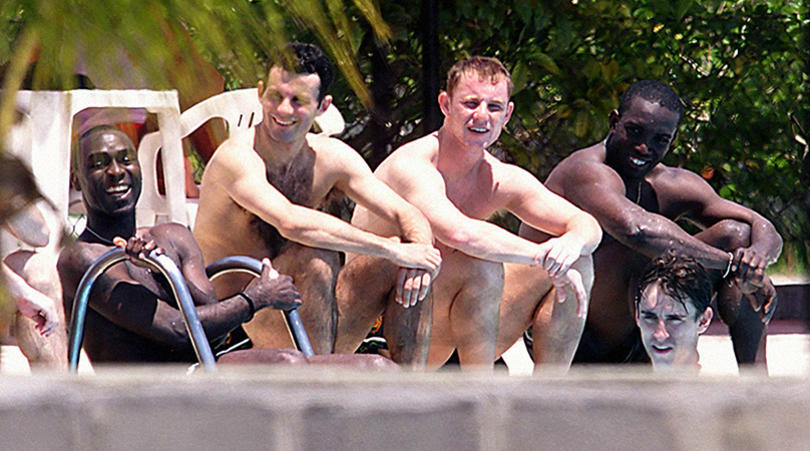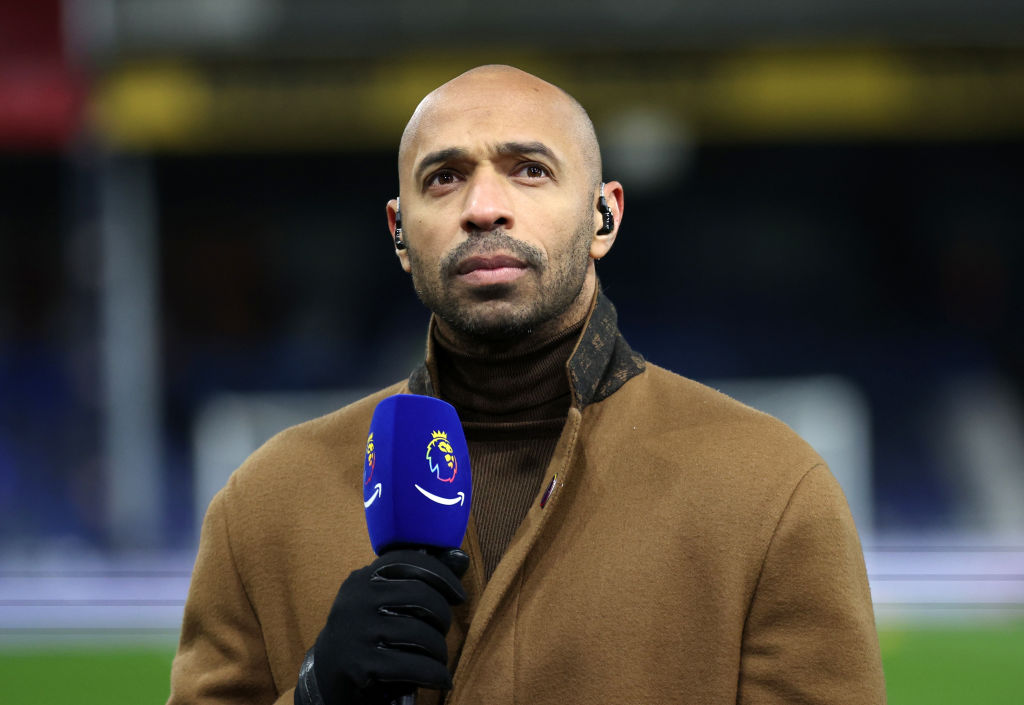Secrecy and delight: remembering George Best's first-team debut (1963)
Best thought he was Manchester United’s errand boy – but ended up wearing the No.7 shirt and starting a legend. On this day 55 years ago...
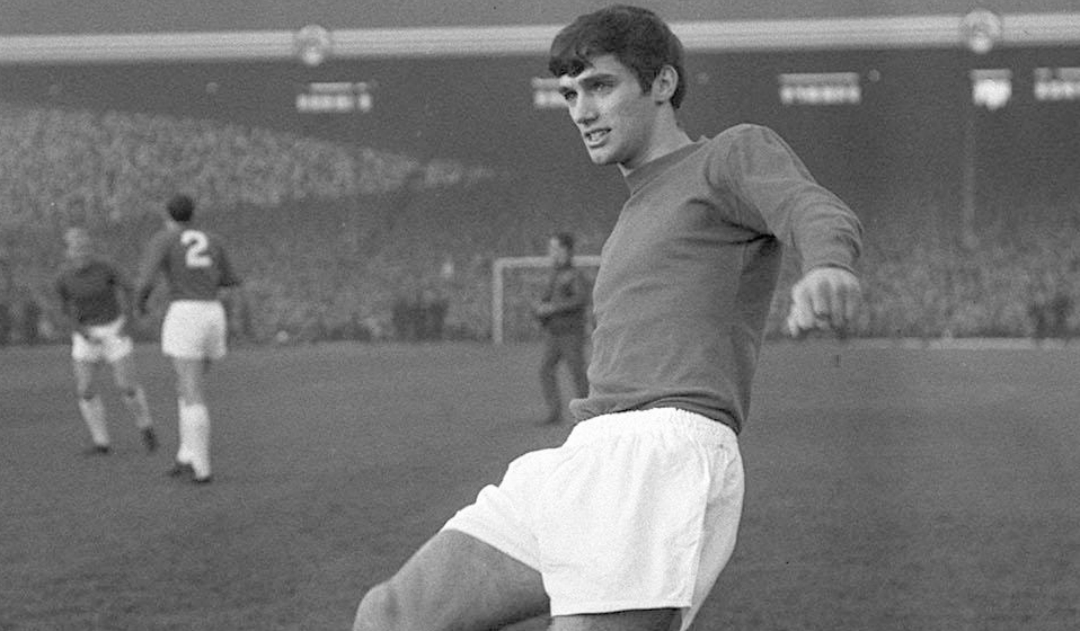
No defender wants to be made a monkey of. Especially a tough-as-teak seasoned pro, battle-scarred and internationally decorated, up against a 17-year-old urchin he’s never heard of.
That’s why West Brom’s Graham Williams has just booted a wispy scamp named George Best up in the air, minutes into his first ever game. The skinny kid is playing opposite Williams on United’s right flank, and the Welsh left-back has welcomed him to Division One football in time-honoured fashion. No prisoners at this level, son. And don’t be trying any of that fancy stuff on me again.
Yet on this warm autumn afternoon at Old Trafford – Saturday 14 September, 1963 – Williams would discover that this upstart wasn't about to be knocked out of his stride. He had guts to keep coming back at Williams, taking the kicks that came with it. And what’s more, he had fancy stuff enough to beat the experienced full-back with alarming ease and regularity.
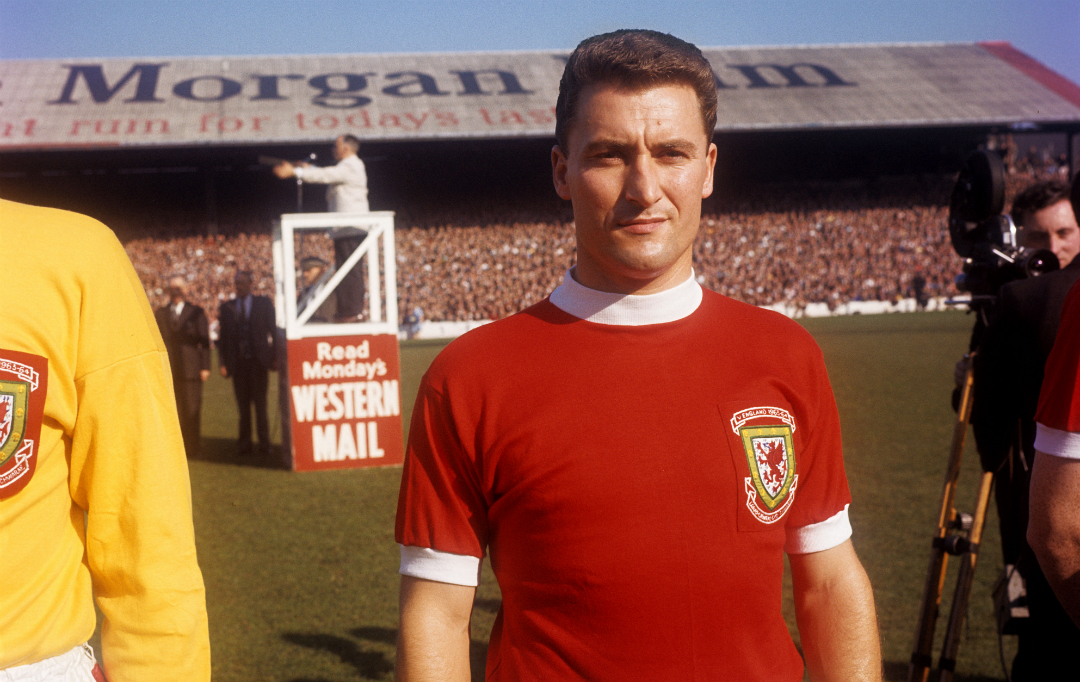
He wouldn’t have known it at the time, but as Williams robustly went about his business that day he was eyewitness to history – as were the 50,453 fans watching from the stands. For this was the debut of perhaps the greatest footballer ever to kick a ball. These light-footed movements over the Old Trafford turf were the first steps that would lead George Best down a road to football legend, icon status and global fame… and the rest.
Busby rebuilds
But more of that later. Let’s first rewind to the outset of the 1963/64 season. Everton, under Harry Catterick, are champions of England having won the 1962/63 Division One title by six points from Bill Nicholson’s exciting Tottenham outfit, who themselves made history by winning the European Cup Winners’ Cup that season.
Manchester United, meanwhile, are a work in progress. Manager Matt Busby (still some years from a knighthood) is in the process of rebuilding, having seen his team of prodigious ‘Babes’ wiped out in 1958’s Munich air disaster just as they seemed on the cusp of true and sustained greatness. For five painstaking years he had first patched his team up, then set about turning it into a genuine force in English football, worthy of succeeding their tragic forebears lost on a snowy German runway.
Get FourFourTwo Newsletter
The best features, fun and footballing quizzes, straight to your inbox every week.
There was scant evidence of progress in United’s final league position in 1962/63, however: 19th in the league table, perilously close to the relegation trap-door. However, Busby’s efforts did bear significant fruit in the form of the FA Cup, won 3-1 against Leicester. Winning the FA Cup meant more in those days than it does now. A genuine climax to the season, it was highly significant as a confidence-booster for the club and players, who after tasting Cup glory felt that they now had a platform to push on and win more.
Moreover, Busby had slowly been shuffling around his pieces on the pitch, and his jigsaw was close to completion. Bobby Charlton (another with a knighthood in his tea leaves) had been in situ as the team’s fulcrum for a number of years, and to his talents Busby had added two very significant players during 1962/63: Denis Law, signed from Torino in August (for a club record fee at the time) and Pat Crerand, bought from Celtic in February.
So with the 1963/64 campaign coming into view, Busby had the foundations of the team he had envisioned. Allied to defensive cornerstone Bill Foulkes and midfield enforcer and ball-player Crerand, Bubsy had his two aces further upfield in Charlton and Law. The latter pair would later become known as two-thirds of the famous ‘United Trinity’.
The third element? He was at that time apparently a long way off the radar, playing for United’s A and B teams. But Busby knew all about him: a waif from Belfast called George Best. And 1963/64 would be the season Busby would let his young genie out of the bottle.
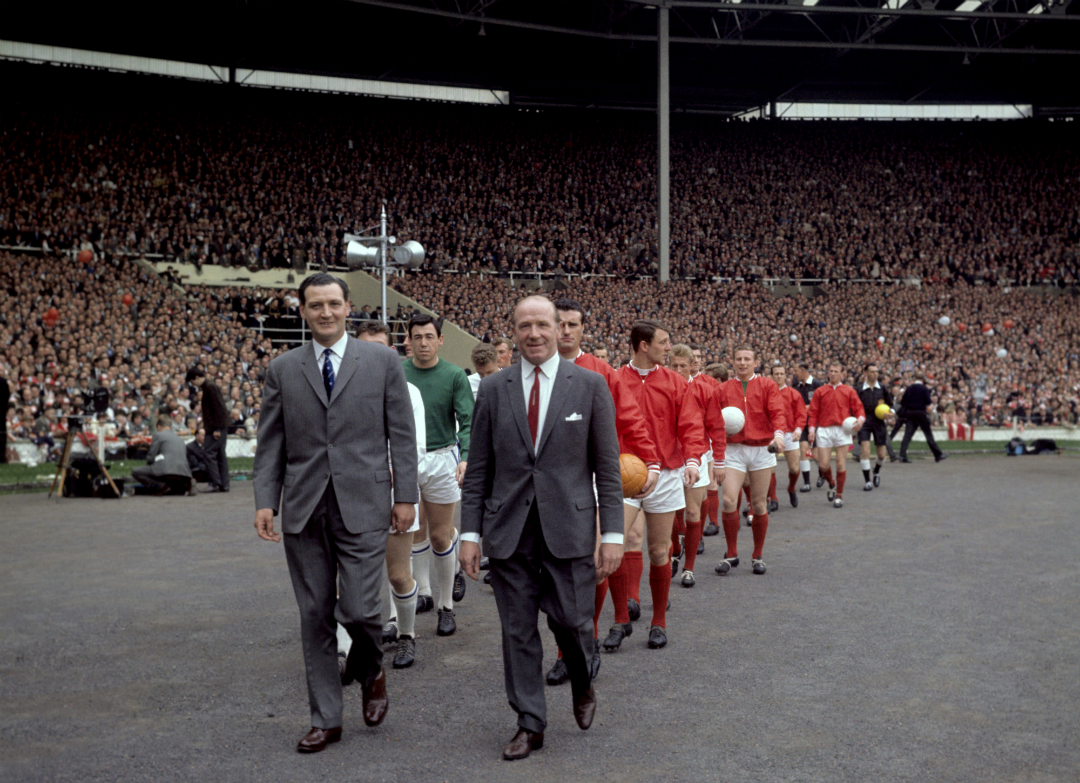
Belfast boy’s break
Not that young Best knew anything about that. He’d originally come to United’s attention after their legendary Irish scout Bob Bishop had sent an equally-legendary telegram to Busby reading: “I think I’ve found you a genius.” Bishop had spotted Best playing for Cregagh Boys, his local youth club side in Belfast, running rings around everyone despite his apparently feeble frame.
When Best had first gone to Old Trafford for a trial as a 15-year-old, though, he’d been a fish out of water. He’d never even left Belfast before, and having to find his own way over the Irish Sea to the alien city of Manchester, reporting to training with people who all seemed bigger, stronger and more confident than him – hampered by a thick Northern Irish accent no one seemed able to understand – was too much for him. Just 24 hours after arriving, homesick George decided he’d seen enough and high-tailed back on the ferry to Belfast, with fellow Irish youngster Eric McMordie who’d also been invited to the trial and got cold feet.
Fortunately, through a combination of United’s eagerness to have their “genius” back, George’s father’s quiet encouragement and the boy’s own determination to take the chance he was potentially blowing, Best returned to Old Trafford as an apprentice. Busby had told his staff not to coach the magic out of his prodigy. “Don’t tinker with the boy’s style,” he’d ordered. “Let him develop his own way, naturally. He’s something special.”
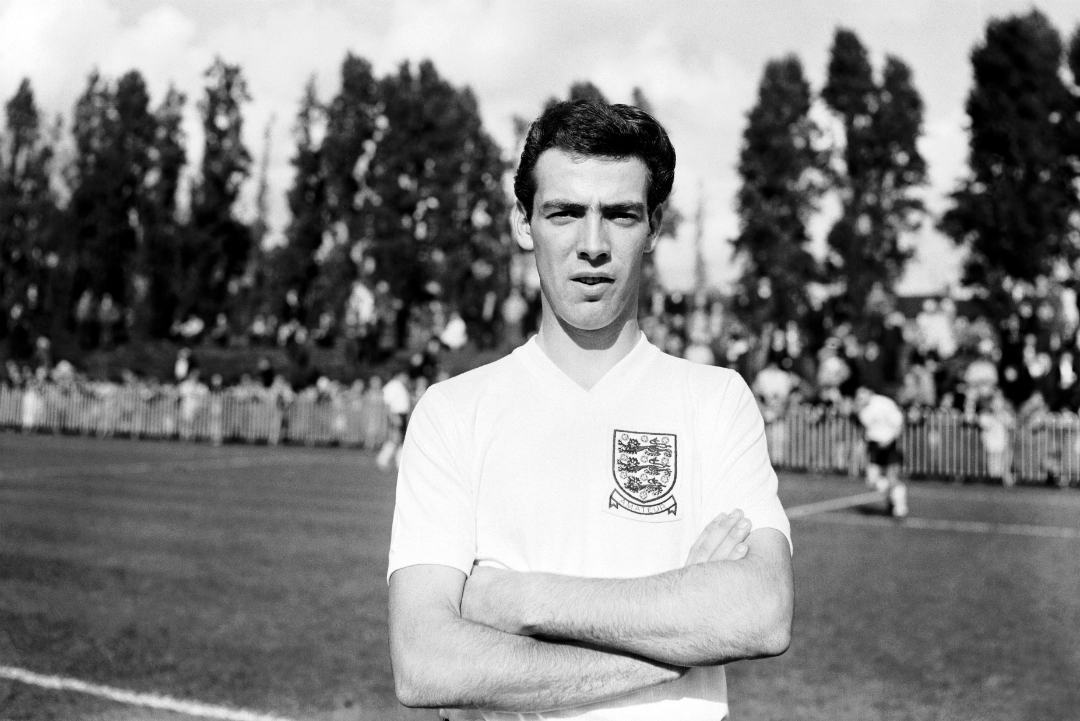
That development didn’t appear to have pushed Best anywhere near the first team by the outset of 1963/64, however – or so it seemed to him, even if he had by now been given his first professional contract.
Yes, Busby had thrown in a 17-year-old for his debut in the first game of the season. But it wasn’t Best. In fact it was his mate, David Sadler, an altogether bigger and stronger young man who got the striker’s jersey in United’s season opener at Sheffield Wednesday. Best, meanwhile, “green with envy”, was playing his football much further down the pecking order, generally for the youth, A or B teams, with the occasional promotion to the reserves. Busby, though – ever the champion of youth – had plans for his talented tyro.
Into the matchday squad
Three weeks into the season, apparently out of the blue, Best was suddenly plucked from the junior ranks and elevated to the senior squad. There was his name, clear as day, listed as ‘reserve’ for the first-team match against West Brom on 14 September 1963.
Best’s delight at this surprise selection was tempered, however, with suspicions that he was only tagging along with the big boys to help shoulder the bags, brew the tea and slice the half-time oranges. He was down as 12th man, but substitutes as we know them were still three seasons away from being introduced into English league football.
As far as Best was concerned, he had no chance of appearing on the pitch. So much so, in fact, that when on the morning of the match – while George was making his way with his senior colleagues for a pre-match steak – Paddy Crerand blabbed that he would be in the team that day, the young man didn’t believe him.
What Crerand knew, though, was that Busby – such a savvy operator – had every intention of playing Best the moment from the moment he had pencilled him in as a reserve. He just didn’t want the youngster to be weighed down by that knowledge, so he’d simply picked Ian Moir – who had a groin injury – at No.7.
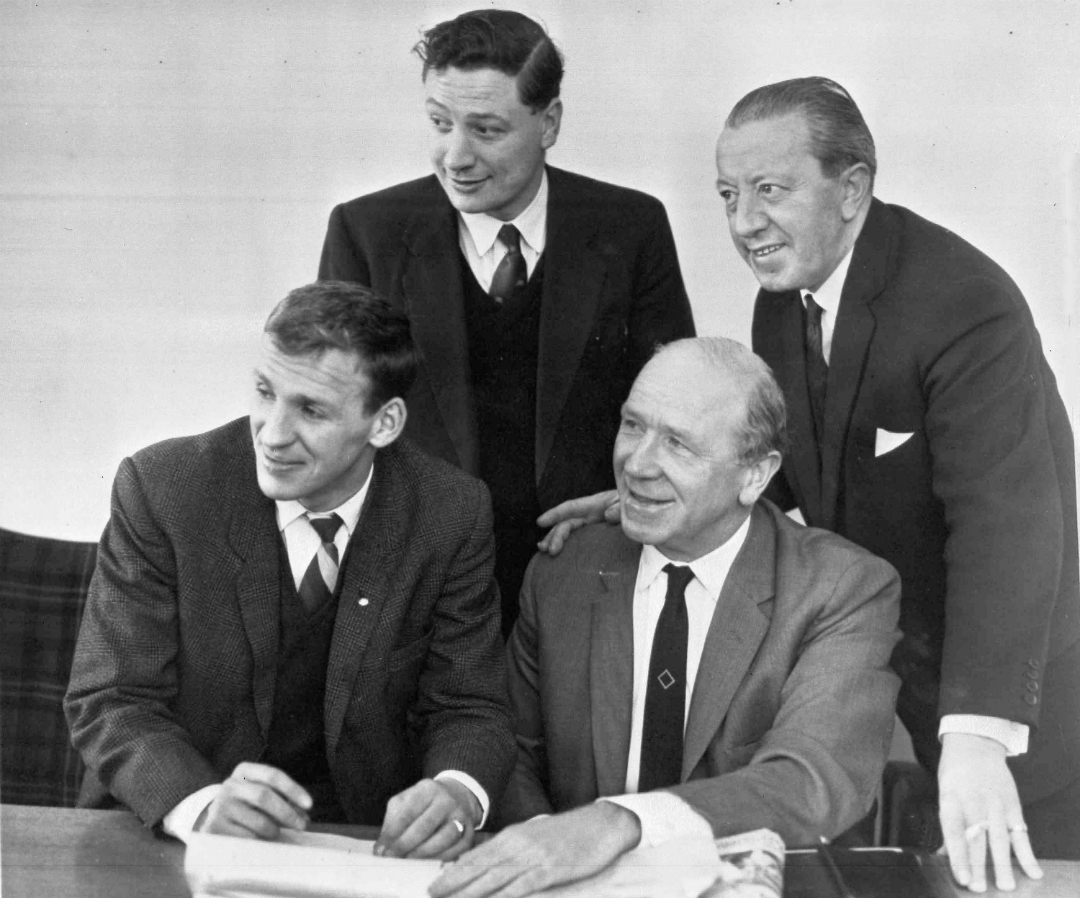
It was only after lunch, on the way to Old Trafford, that Busby casually informed Best that he’d be playing. There was no time for Best to get nervous... which was Busby’s plan all along.
Turned out there was never any chance of that anyway. The way the youngster acted in the dressing room, you’d think he was making his 500th appearance for Manchester United, not his first. While those around him displayed pre-match nerves in their own ways – Sadler in and out of the toilet, Nobby Stiles obsessively checking and re-checking his kit, Charlton having a nip of whisky – George just sat and read the programme… before disappearing out for a cup of tea until just before kick-off.
That was how it would be for Best throughout his career – he was nerveless. The prospect of running out in front of 50,000 people to play football caused him not one jot of consternation, first time or not. Emerging from the tunnel into the view of the teeming masses, in fact, was a major rush for George – it emboldened and excited him, rather than overwhelming him.
Next: "I remember thinking to myself, ‘Georgie boy, you’ve got nothing to worry about’"
Into battle
With United and Albion both having made fast starts to the season, the game was a top-vs-second clash. Best was to be up against Graham Williams, a square-shouldered left-back often now described as the Stuart Pearce of his day. George’s team-mates had been telling him all about his opposite number in the build-up, painting a fearsome picture.
In one of his numerous autobiographies, Best of Both Worlds, George recalls: “Out on the pitch I scanned the opposition for a glimpse of this character Williams, the man they said carried a club in either foot. I was also looking for fangs and a hairy face. But when I saw him I was amazed. He seemed so small for a full-back and I remember thinking to myself, ‘Georgie boy, you’ve got nothing to worry about’.”
As soon as the match was under way, Best got plenty of opportunity to check for those fangs up close, with the Albion man wasting no time in applying some hefty tackles. The rough treatment kept coming but so did Best, even when one challenge left him with an ankle knock. He took to moving between right and left wing, and everywhere in between.
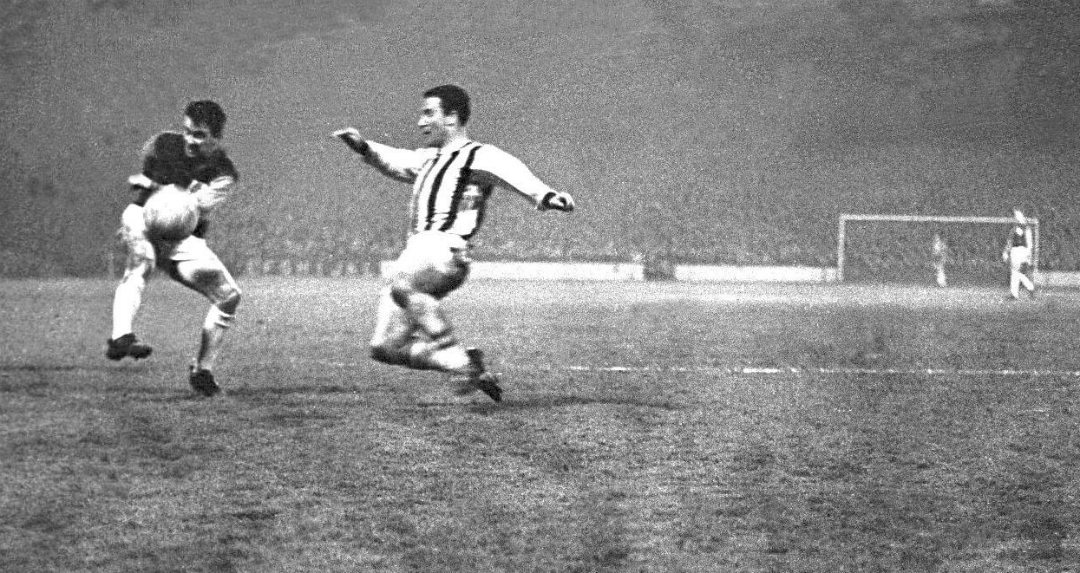
“Young Best came in from some stern treatment by that splendid back Williams,” read one contemporary newspaper match report, while another praised his courage, saying he “took a tremendous hammering from West Brom full-back Graham Williams, but never gave up despite an injury”.
United won the match 1-0, and Best had a part in setting up the goal for his mate Sadler via Stiles, shortly after the hour mark.
Reaction to the debutant
So how did the 17-year-old new boy really do? He remembered seeing a fair bit of the ball, taking on his man… and probably hogging it somewhat. “I recovered [from Williams’ early strong challenge] and gave him a bit of a run round. I was a right little so-and-so,” he recalled in Blessed, another of his autobiographies.
“Once I got [the ball], I didn’t want to give it to anybody else because I was so used to almost owning it in the youth team. So while my team-mates were screaming for it I was trying to beat three or four opponents and doing all the tricks I was used to performing for my B-team pals.”
The newspaper reporters in attendance were in general agreement. One notes that “Best’s football was occasionally of a high quality but he also showed his immaturity”; another says he “showed that, with a little more experience, he has the footballing ability to challenge strongly for a permanent position in the United senior squad”; while a third suggests he shouldn’t be “upset at getting no change out of superb Albion left-back Graham Williams”.
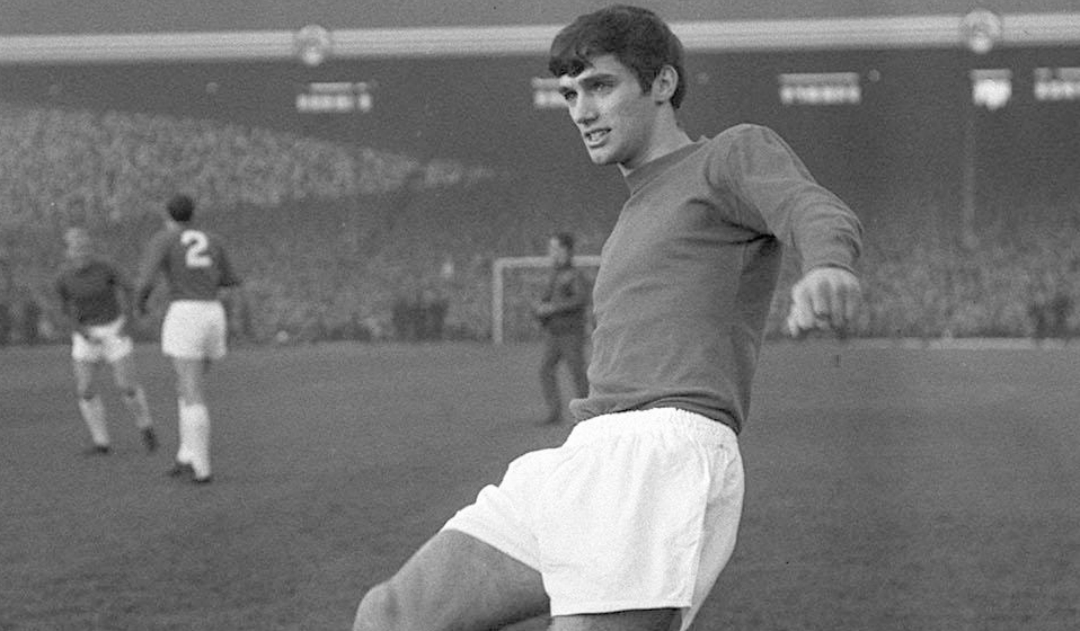
The consensus, then, points to flashes of brilliance from the youngster, bags of courage and appetite for the physical battle (this was the early 1960s, remember, when men were men, tackling was ferocious and shinpads were for sissies), if an understandable greenness and lack of experience.
Williams himself recalled events. “We’d heard a bit about George already – he’d played against us in the reserves and if a 17-year-old makes a debut, there’s always a bit of extra interest. But I wasn’t worried, he was just a kid,” he says. “When the game started, he only stayed on my side for about 15 minutes. He didn’t get a kick… except from me! After that, he just played where he wanted, got involved with the game – and that was where you got a glimpse of how good he might be.”
Rest, recovery… and return
By 5pm, young Best was back in the dressing room having his hair ruffled avuncularly by the senior pros, getting a “Well done” here and a “Good lad” there. Though he felt he could have played better – because, frighteningly, he had found it quite easy – he was chuffed to have made his senior debut.
He quietly hoped he might be in the team for the match at Blackpool two days later. He wasn’t. Moir had recovered from his injury and Best was back among his A and B team pals as quickly as he’d been promoted.
In fact, he’d stay at that level for another three months without getting another sniff of first-team football. But when his next chance came, he snatched it for good. There would be no going back. After his second match (and first goal), against Burnley at Christmas, George Best became practically undroppable for a decade.
The call for the Burnley match was as much of a surprise to George as his first selection had been. With Busby sticking to a fairly settled side, Best was out of the picture. But when United lost 6-1 at Burnley on Boxing Day 1963, following a 4-0 hiding at Everton, an exasperated Busby rang the changes. And uppermost in his mind was returning the Belfast boy to his XI.
A telegram was despatched to Northern Ireland, where Best was enjoying Christmas with his family. It requested he report back to Manchester without delay. United had a return match with Burnley at Old Trafford on 28 December. There was to be no charade this time, no hugger-mugger over team selection: Best was in. No question.
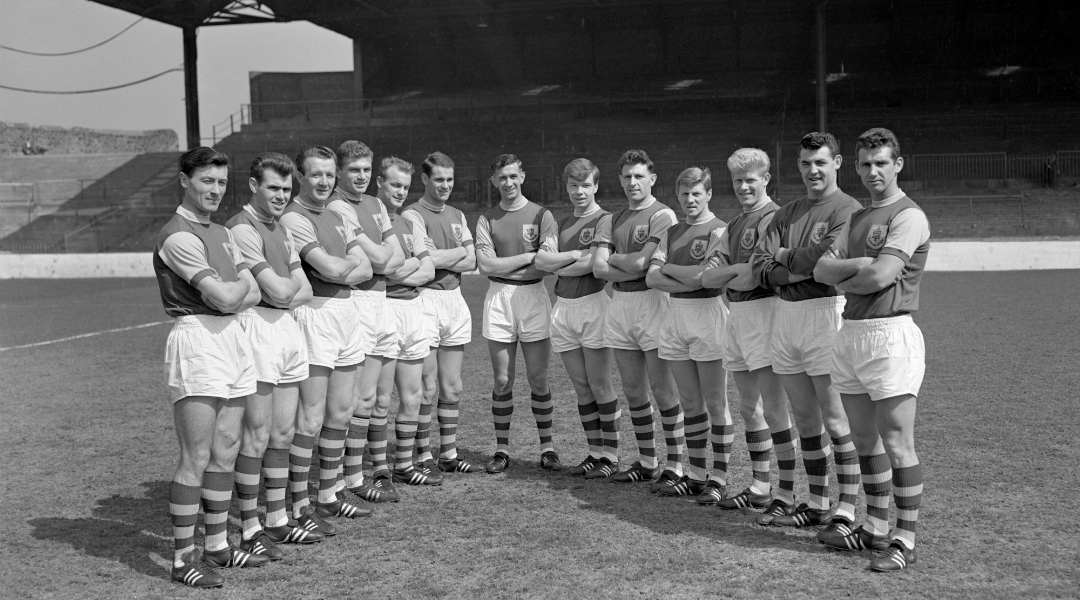
And this time it was not a story of flashes of brilliance, glimpses of genius. This time Best brought the full package. On the right wing again, George was up against an international full-back once more, just as he had been on debut. This time it was his fellow Northern Irishman Alex Elder – but George bestowed no favours on his compatriot. Best gave Elder a torrid time, roasting him time and again.
Paddy Crerand, typically, pulls no punches in his description of Best’s performance.
“[Elder] was a good player but George destroyed him. Absolutely murdered him - so much so that I actually felt sorry for Alex,” recalls Crerand. “George ran him silly for the whole game. It wasn’t just the odd occasion, like it had been with Graham Williams. This was total annihilation. George was magnificent, and from then on they couldn’t leave him out.”
The cherry on the top for Best was a debut goal, slotted home from a cross in the 38th minute to put a rampant United 3-0 up in a match the Reds won 5-1, gaining revenge within 48 hours for that Boxing Day thumping. And George was back home in Belfast that night (he’d negotiated his way to being flown back directly after the game), as incredulous as his pals on the Cregagh estate the next day that there was a picture of him in the Belfast Telegraph actually scoring a goal for Manchester United.
In the team for good
Best became a first-team fixture thereafter. Of the 26 games that remained in the 1963/64 season, he played 24, scoring another five goals along the way. The campaign eventually finished in frustration for Busby and his men – despite the heroics of Denis Law, who scored a phenomenal 46 goals in 42 games – to this day a Manchester United club record.
The Red Devils finished runners-up in the league to Liverpool, were knocked out of the FA Cup in the semi-finals by West Ham (after a draining quarter-final against Sunderland that required two replays) and crashed ignominiously out of the European Cup Winners’ Cup in the quarter-finals, losing 5-0 at Sporting CP despite taking a 4-1 lead to Portugal from the first leg (to Busby’s fury).
But with the emergence of Best, Busby’s jigsaw was complete. The Holy Trinity were in place. The good times were ready to return. The next four seasons were the most successful the club had yet seen, yielding two league titles (1964/65, 1966/67) and, most poignantly of all, a European Cup won in May 1968 at Wembley, a decade on from the sorrow and loss of Munich.
At the heart of all this success was Best, dazzling the world with his ball skills and sheer imagination, doing things on the pitch (and, increasingly, off it) that had never been seen before. So much was to follow – so very, very much. But it all started on that autumn day 55 years ago, when the name ‘Best’ appeared on the Manchester United team sheet for the very first time.
